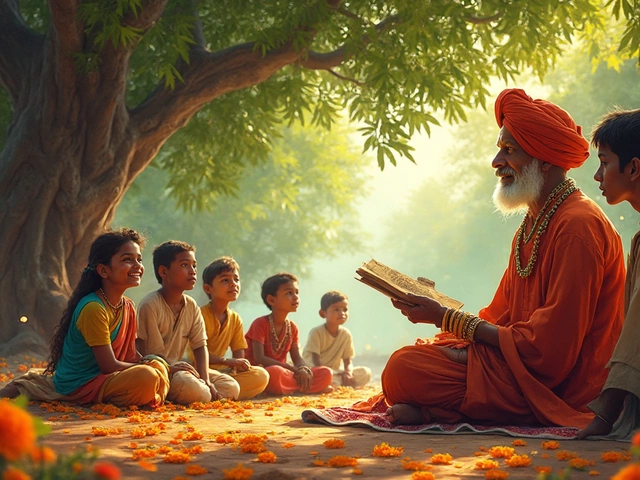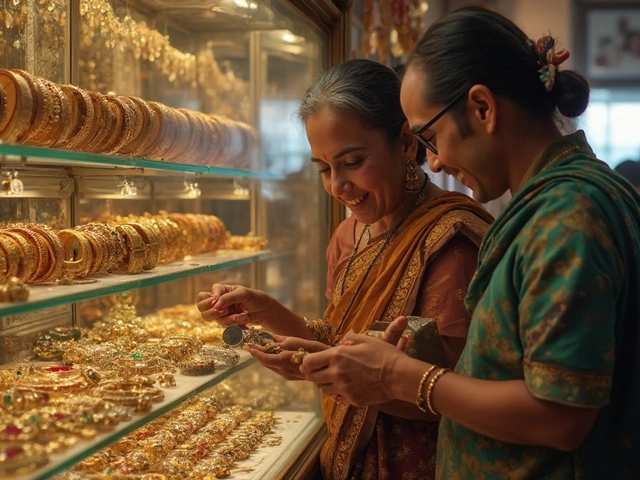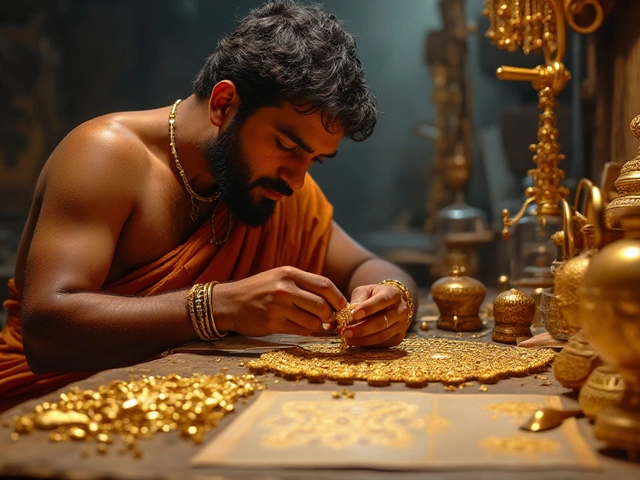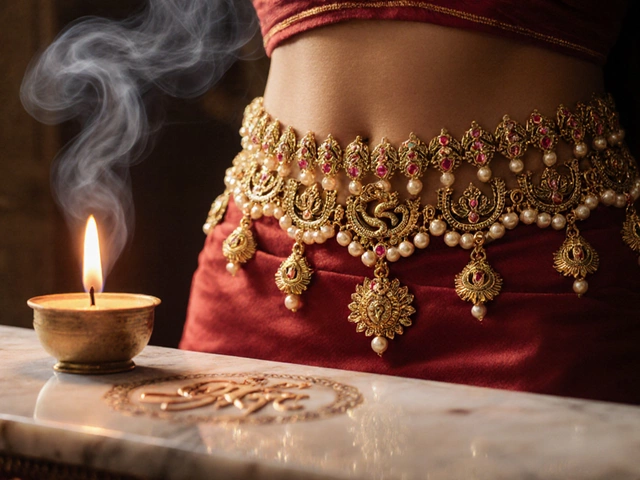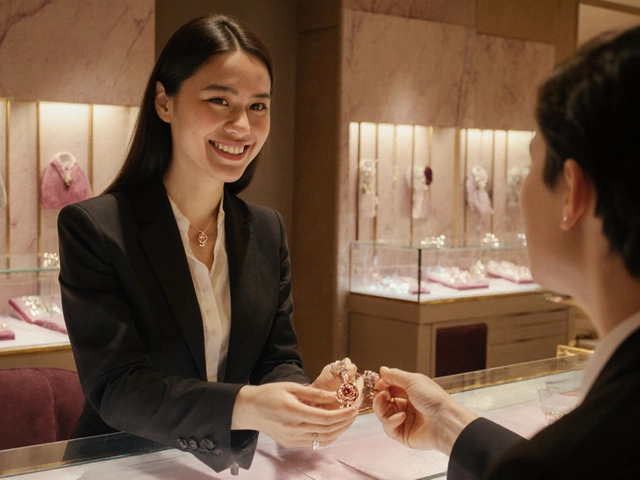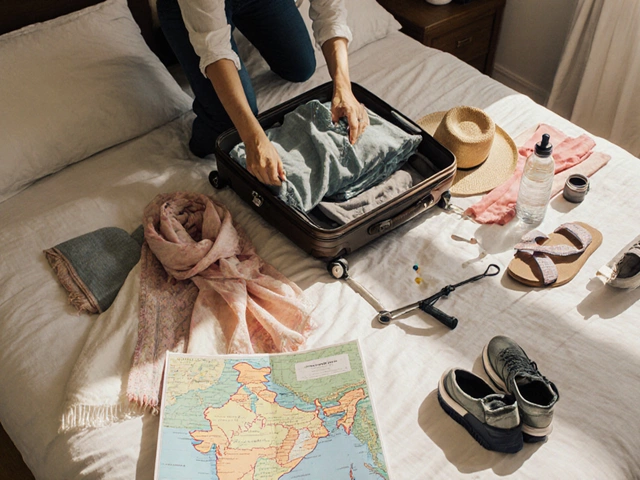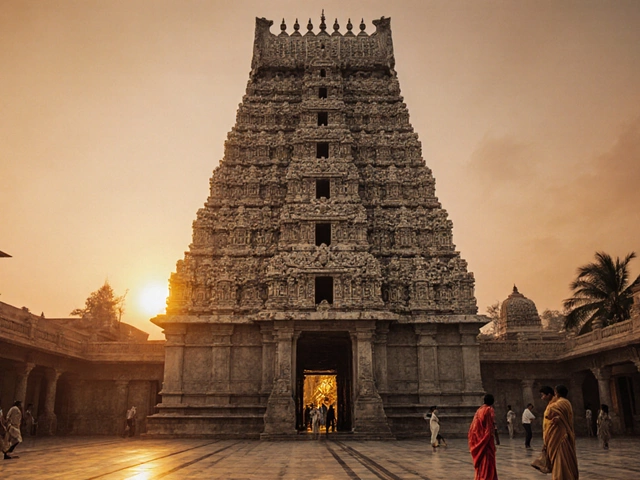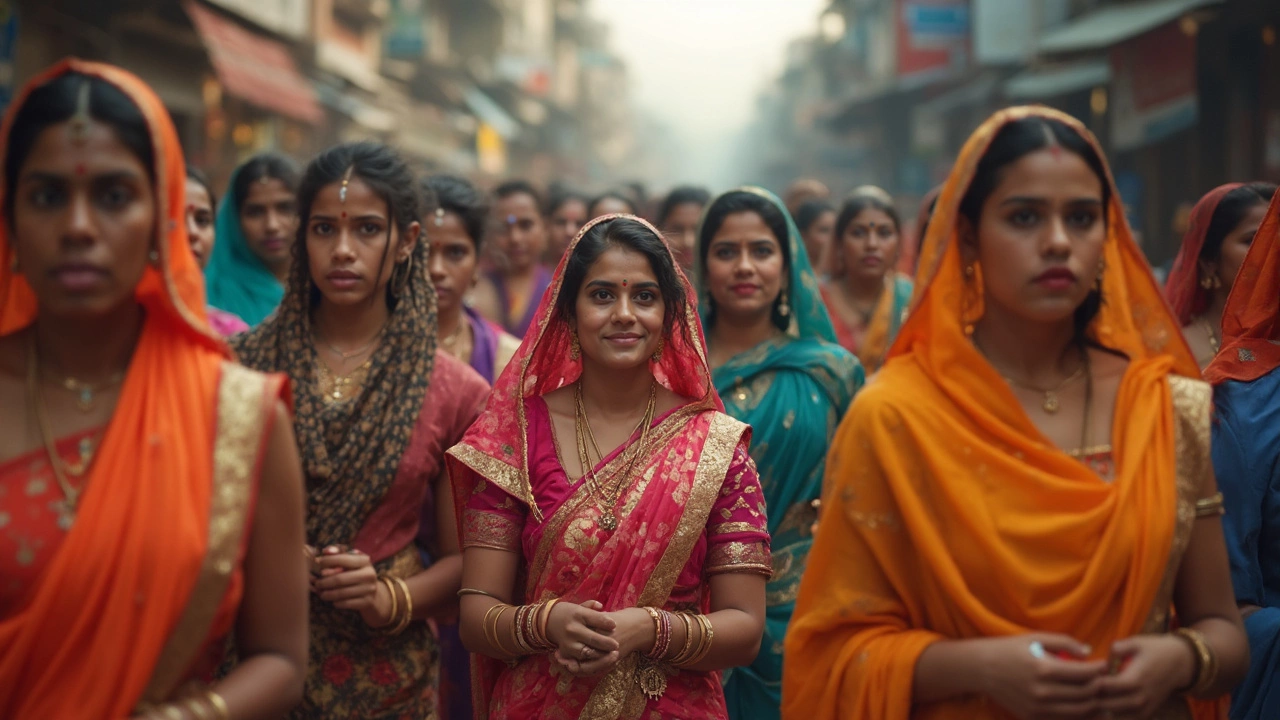
If you pop the question “What’s the most feminine piece of clothing?” to people in India, chances are, the sari gets mentioned right away. There’s something about draping six yards of fabric that just screams classic femininity here. But why is that? And does being feminine just mean “traditional”?
It’s not just about sticking to what your mom or grandmother wore. The whole idea of what counts as ‘feminine’ has changed over time, shaped by movies, media, and what you see on the streets. In India, a sari can say a lot about your personality—are you bold with your colors, simple with your patterns, or somewhere in between?
But here’s the twist: femininity doesn’t live only in the sari. Accessories play a massive role too. Bangles, jhumkas (those statement earrings), and anklets can make even a basic kurta or salwar look and feel feminine. It’s all about how you mix and match what you have, and how you make it yours.
- Defining Femininity in Clothing
- Why the Sari Stands Out
- Accessories That Boost Feminine Style
- Region and Culture: How Femininity Looks Different
- Tips for Styling Feminine Outfits
- The Future of Feminine Fashion in India
Defining Femininity in Clothing
So, what actually makes an item of clothing feminine? It’s not just frills, florals, or the color pink—although, let’s be real, those show up quite a bit. Around the world, and especially across India, femininity in fashion usually means pieces that highlight flowy shapes, soft fabrics, and details that catch the eye, like embroidery or lace. Comfort, elegance, and a mood of celebration tend to go hand-in-hand.
But there's no one-size-fits-all. If you look at history, you’ll see that what counted as feminine changed big time across places and decades. Take the 1960s, for example: worldwide, short skirts and fitted tops were a symbol of modern femininity. In India, though, traditional items like the sari kept their hold even as the salwar kameez and later, jeans with kurtis, became more popular among younger women.
Today, the definition gets even more flexible. Some women feel most feminine in a classic sari, others in a sharp pantsuit or an easy-breezy dress. What matters is how the clothing makes you feel and express yourself—confidence is half the game.
- Feminine fashion means more than tradition: It’s about expression, comfort, and confidence.
- India’s most feminine accessory is often seen as the sari, but jewelry and other pieces count too.
- Modern Indian fashion blends traditional fabrics and cuts with global trends.
Check out these quick facts that show just how much the idea of femininity in fashion varies in India today:
| Item | Urban % (Women 18-35) | Rural % (Women 18-35) |
|---|---|---|
| Sari as top choice | 37% | 82% |
| Salwar Kameez | 45% | 13% |
| Western wear (Dresses, jeans) | 18% | 5% |
At the end of the day, clothes that feel feminine to you might be a sari, a flowy dress, or even a pair of statement earrings. It’s a personal call, shaped by your culture, lifestyle, and what makes you feel like your best self.
Why the Sari Stands Out
The sari isn’t just a piece of clothing; it’s a staple across India and instantly recognizable. Most people say a sari is the most feminine item out there not just because it looks elegant, but because of how versatile it is. What’s amazing is the sari suits almost every body type and any age group. Young or older, tall or petite, there’s a drape that will work for you.
Wearing a sari isn’t a one-size-fits-all thing. There are dozens of ways to wear it, depending on where you’re from or the vibe you want. For example, the Nivi style from Andhra Pradesh, the Bengali drape, and the Maharashtrian dhoti style all look completely different, but each says ‘feminine’ in its own way. You can go flashy, simple, or super traditional—your call.
Here’s something cool: there are over 80 documented ways to drape a sari! And these styles often signal different castes, professions, and regions. Some materials are saved for big events—think silk at weddings, cotton for everyday life, chiffon for those office parties.
Check out this quick comparison of sari materials and when they’re usually worn:
| Material | Common Occasion | Average Cost (INR) |
|---|---|---|
| Silk (like Kanjeevaram) | Weddings, Festivals | 5,000 – 50,000 |
| Cotton | Daily Wear | 500 – 4,000 |
| Georgette/Chiffon | Office, Parties | 1,000 – 10,000 |
What really makes the sari unique is how it blends fashion and identity. Designers today are always finding ways to make saris more manageable—think ready-to-wear, pre-stitched pleats, and lighter fabrics. Even Bollywood stars love putting a modern spin on them at red carpet events.
If you’re diving into the world of feminine fashion in India, grabbing a sari isn’t just about looking pretty. It’s about connecting to a bigger story, while also showing off your style.
Accessories That Boost Feminine Style
When it comes to topping off a feminine look in India, accessories aren’t just extras—they’re often the secret sauce that brings the whole outfit together. From metal to glass, fabric to gemstone, there’s an accessory for every mood and moment. If you check the top-selling items on popular Indian fashion sites, you’ll find bangles, earrings, and statement necklaces dominating the list, proving that women love to personalize their outfits.
Let’s break down some essentials:
- Bangles: These aren’t just for weddings. Everyday glass bangles add sound, color, and tradition. Metal and bangle stacks have become urban favorites too. According to a Myntra trend report, bangles were in the top 3 best-selling accessories for women in India in 2024.
- Jhumkas: These bell-shaped earrings are a solid favorite, going from simple silver pairs to big, ornate styles worn at festivals and parties. They instantly add a festive, feminine touch to even a plain kurti.
- Bindis: That small colorful dot isn’t only traditional. Bindis now come in stick-on gems, shapes, and even minimal dots that college students love pairing with jeans and crop-tops.
- Payals (Anklets): Anklets make feet look graceful and their soft chime has a gentle, classic feel. Silver payals with small ghungroos are especially popular for special occasions.
- Maang Tikkas: Worn on the center parting of the hair, these add a regal vibe. While they’re a must for brides, influencers now style minimal maang tikkas with Indo-Western looks too.
Here’s a quick look at what women in India add to their outfits most often:
| Accessory | Daily Wear (Urban %) | Festive/Special Wear % |
|---|---|---|
| Bangles | 65% | 90% |
| Jhumkas | 42% | 76% |
| Bindis | 23% | 68% |
| Anklets | 28% | 60% |
If you’re shopping for feminine fashion accessories, focus on essentials like these, then add a couple of fun, modern pieces to keep things updated. For example, contemporary chunky earrings or a bold tote can pair well with ethnic outfits and fusion dresses alike. Doing this lets you keep tradition going but still make the look your own.
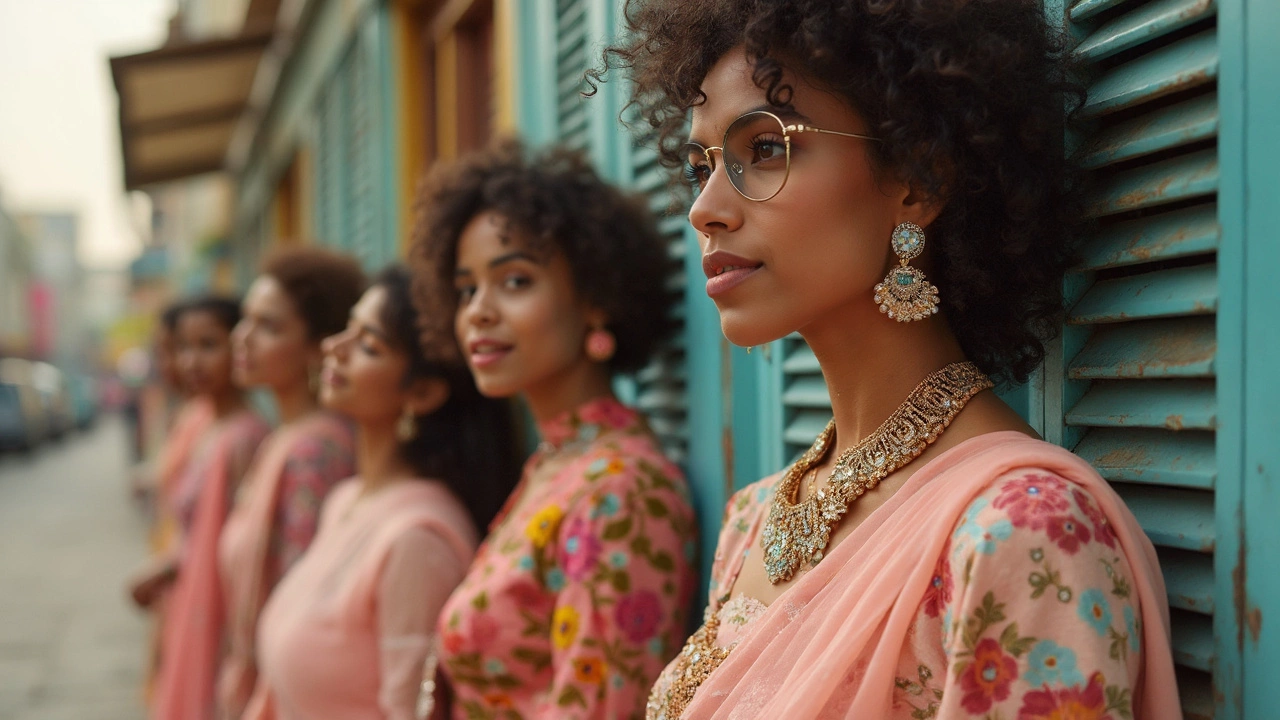
Region and Culture: How Femininity Looks Different
Walk around any city or village across India, and you’ll notice that the idea of what counts as “feminine” changes every hundred kilometers. The sari, while iconic, is just the start. Up north, you’ll spot women wearing salwar kameez, and in Bengal, it’s all about the handloom cotton sari draped in the traditional style. Move to Gujarat, and suddenly, you see the chaniya choli taking center stage during Navratri.
What’s considered feminine in Mumbai isn’t always the same in Kolkata or Chennai. Local climate, community customs, and even religion play a role. In Kerala, the mundum neriyathum—a two-piece outfit—is what’s worn for special occasions. For many in Punjab, it’s the bright, flowy patiala salwars with a dupatta thrown over the shoulder.
If you take a step back, you’ll also see how certain regions put a spotlight on specific accessories. For example, silver anklets and toe rings are a staple in Rajasthan, while glass bangles are a must in Maharashtra. Here’s a quick breakdown of what’s popular, depending on where you are:
- North India: Salwar kameez, phulkari dupatta, jhumkas
- South India: Kanchipuram silk sari, jasmine flowers in hair, gold jewelry
- West India: Bandhani sari, oxidized silver jewelry, bangles
- East India: Baluchari sari, conch shell bangles, woven cottons
Regional cinema and television have also shaped how feminine style looks today, giving louder voices to local designs. Actresses sporting traditional wear in blockbuster movies fuel trends almost overnight.
If you’re curious about the sheer reach of traditional feminine clothes, check out these stats:
| Region | Top Feminine Attire | Popular Accessory |
|---|---|---|
| North | Salwar Kameez | Jhumkas |
| South | Silk Sari | Gold Necklaces |
| West | Chaniya Choli | Bangles |
| East | Cotton Sari | Shankh Pola Bangles |
Even if two people live in the same city, what feels most feminine to one might look completely different to another. There’s no official rulebook. Geography and culture do the talking, and together, they create a patchwork of styles you’ll only find here.
Tips for Styling Feminine Outfits
Dressing in a way that feels feminine isn’t about following strict rules—it’s more about finding details that click with your personality. If you’re in India and want to channel that feminine fashion vibe, your best bet is to start with pieces like the sari, kurti, or a breezy salwar suit, but bring in your own twist with modern fits or playful prints. Even jeans can get a softer spin with the right accessories.
Here are a few things to keep in mind if you're aiming for that feminine look but want it to be practical too:
- Balance your look: If your attire or top is light and flowy, pair it with something fitted at the bottom, and vice versa. It keeps things looking put-together, not sloppy.
- Go for soft or bright colors: Pinks, pastels, deep reds, or classic whites always pop. Research by Pantone shows shades like "Peach Fuzz" and "Rose Quartz" as top picks for women in India in 2025.
- Accessorize smart: Statement earrings or a chunky bracelet do wonders. Don’t pile everything on at once, though—pick one or two standout pieces.
- Choose comfy fabrics: Cotton and georgette saris aren’t just easy on the skin—they’re lighter to carry through a busy day and stay stylish in India’s hot climate.
- Footwear matters: Bellies, juttis, and Kolhapuris add that classic touch. For something modern, nude heels or strappy sandals work great with Indian and Western styles alike.
- Hair and makeup: Even simple changes, like a soft braid or fresh mascara, can lift the whole look. Dewy makeup is trending this year as it gives a natural glow without going overboard.
Here’s a quick table with some practical pairings and when they work best:
| Clothing Item | Accessory | Occasion |
|---|---|---|
| Sari (cotton) | Silver jhumkas | Office, semi-formal event |
| Kurti with palazzo | Stacked bangles | College, casual outing |
| Salwar suit | Kolhapuri sandals | Family functions |
| Western dress | Delicate pendant | Dinner party |
Don’t be afraid to switch things up, either! Mixing traditional accessories with jeans or a simple tee with an ethnic skirt isn’t off-limits. The best style tips always come from experimenting and seeing what actually feels right for you and your day.
The Future of Feminine Fashion in India
The cut and color of what people call ‘feminine’ is changing fast in India. Ten years back, most would spot a sari or a salwar suit on the streets. These days, there’s more variety—think fusion wear, Indo-western gowns, and even jeans paired with a stole or a kurti. Social media has a lot to do with this shift. Instagram and influencers are pushing Indian fashion trends to keep up with the global style buzz, while still mixing in traditional feminine fashion elements.
There’s a constant mash-up happening: people layer classic pieces like a sari with crop tops, throw boots on under a lehenga, or wear metal belts with a cotton saree. Fast fashion brands are now offering ready-to-wear saris, pre-stitched pleats, and cleverly designed blouses that fit every body type. More working women are choosing lightweight, hassle-free fabrics for daily wear because it means less time fussing over their looks and more comfort on the move.
Here are some things shaping the next wave of feminine style in India:
- Sustainability: Eco-friendly fabrics are in. More brands are using organic cotton, recycled materials, and plant-based dyes.
- Inclusivity: Designers are finally making clothes for all sizes, not just the typical “model” figure. Runways now show real bodies and diverse backgrounds.
- Tech Mixes: Online shopping and virtual try-ons are making bold, new looks way more accessible, even in small towns.
- DIY Accessories: From hand-painted juttis (shoes) to custom jewelry workshops, personalization is a big draw. People want their own spin on what’s ‘feminine’.
Just look at these numbers showing how things are moving in India’s fashion market:
| Trend | 2023 | 2025 (Estimated) |
|---|---|---|
| % of women buying Indo-western outfits | 34% | 44% |
| Eco-friendly fashion sales (crore INR) | 260 | 470 |
| Online fashion shoppers (million) | 75 | 112 |
It’s obvious that the definition of what’s ‘feminine’ isn’t fixed. It’s getting broader, more personal, and a lot more comfortable. Going forward, expect even more mixing: old with new, East with West, and everyday wear with creative spins. No matter the trend, the Indian twist never gets lost—it’s just evolving to fit the next generation’s taste.

